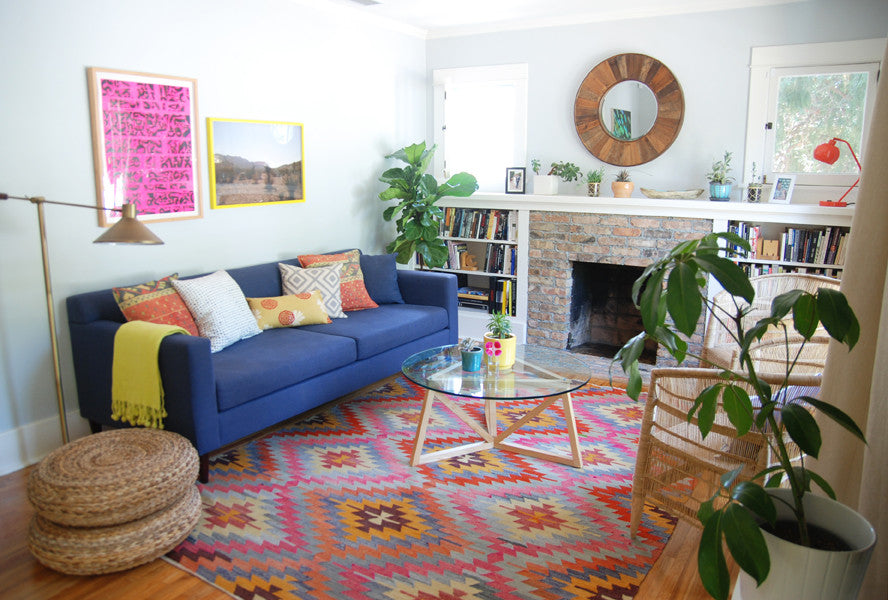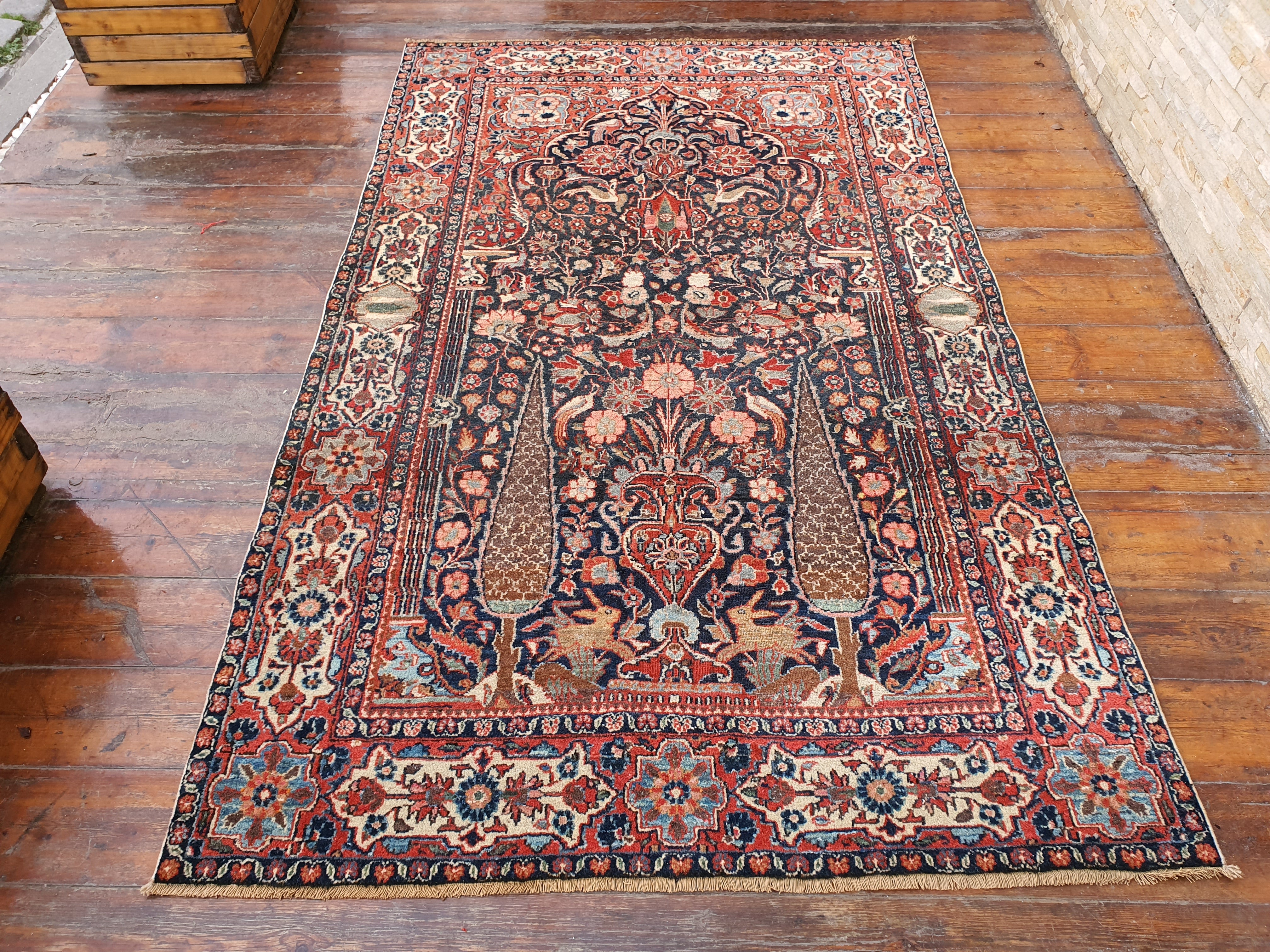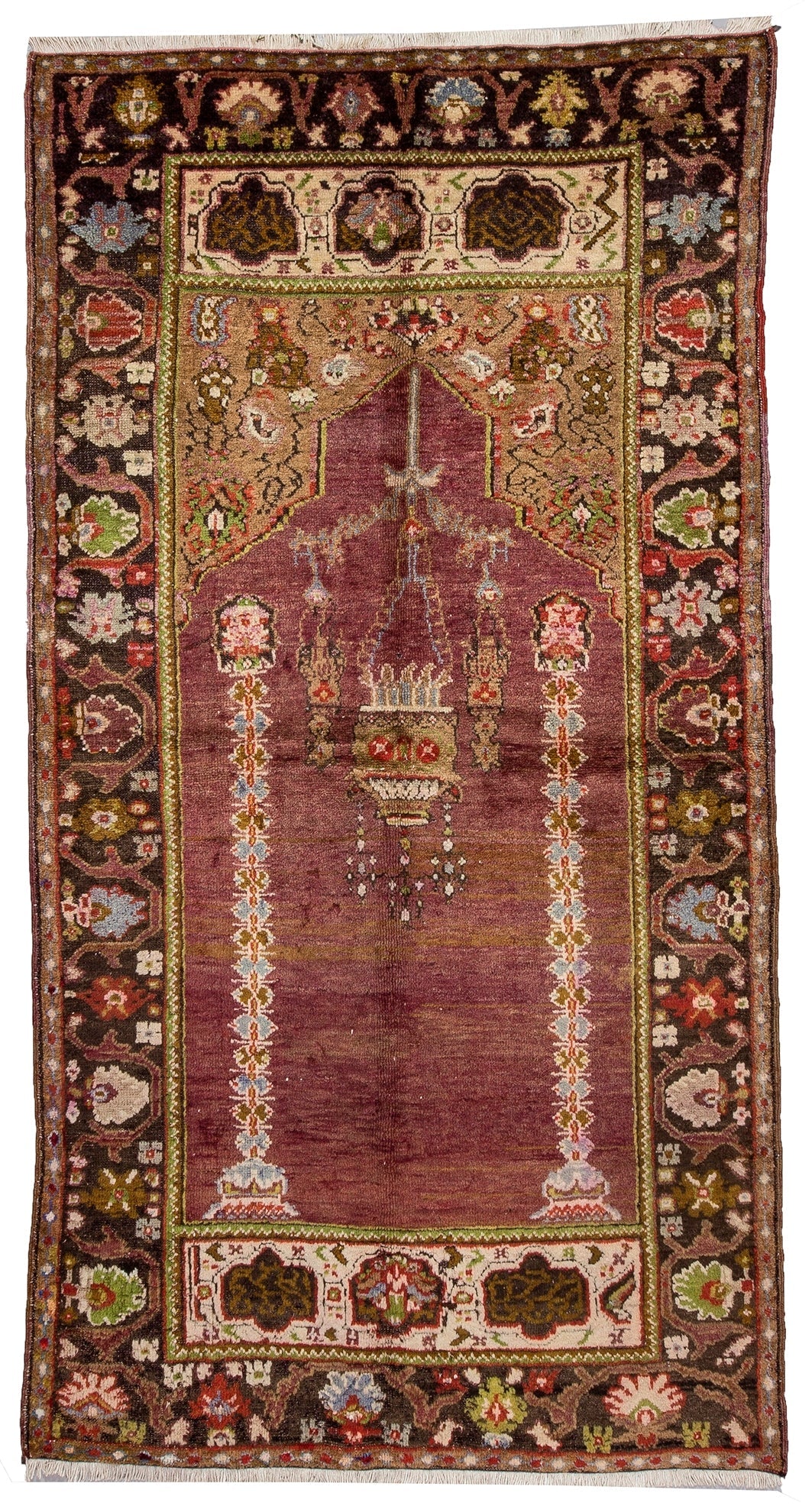
Decorating with Kilim and Turkish Rugs
Kilims, a type of flat weave rug, started to gain popularity a couple of years ago. You would think the microtrend within the bigger trend of global influences for the home would come and go, but who can deny the allure of the exotic? More people are discovering the unique appeal of kilims, and the geometric patterns are being integrated into more interiors.
An instant way to create a Middle Eastern authenticity to your Mediterranean-style villa is to add kilim rugs and pillows. The wool and flat weave method means that these textiles are hardy enough for high traffic as well as indoor and outdoor exposure. They would make the perfect addition for a sunroom.
Hailing from a region known as Anatolia (Central Asia), the kilim rug is mainly Turkish in origin and resembles a Persian or Oriental type rug, but it is flat woven, meaning it has no pile. You can identify a kilim by its geometric octogonal and diamond medallion designs.
Kilim rugs receive their warm natural colors from the wool that is traditionally dyed with vegetables. The ochres, reds, browns, and sometimes purples and blacks tie together a bright multi colored room by offering both harmony and contrast.
Global: check. Ethnic: check. Tribal: check. Yes, kilim rugs are all those things but more. The initial image you might get in your head is a bohemian pad with a large kilim rug and floor cushions tastefully strewn about for relaxed gatherings.
If the kilim is hardy enough for a nomadic tent floor, you can trust it will hold up to the abuse of the kitchen or bathroom floor. It will add a jolt of color and visual interest to a high functioning sterile space such as a kitchen or bathroom.
Sometimes, you will find a beautiful kilim rug but due to its age, it is no longer suitable for the floor if you want to see it last many more years. The best way to salvage the faded textile is to repurpose it into floor or sofa cushions. The original character of the rug survives, but with a new function. Nestled among other salvaged and vintage pieces, the kilim pillow is just right.
Many of the great mid-century modernists were inspired by the geometric patterns and earthiness of kilims and other tribal art. Today, it seems like a natural and critical step to enliven a modern, stark white minimalist space with a few tribal pieces and a kilim rug.
A close up look at a modern day kilim rug. Originally these tribal textiles were used in everyday life as floor coverings, tent decorations, storage sacks and saddlebags. It is amazing to bring a small part of prehistoric human traditions into our everyday modern lives.



Leave a comment
This site is protected by hCaptcha and the hCaptcha Privacy Policy and Terms of Service apply.